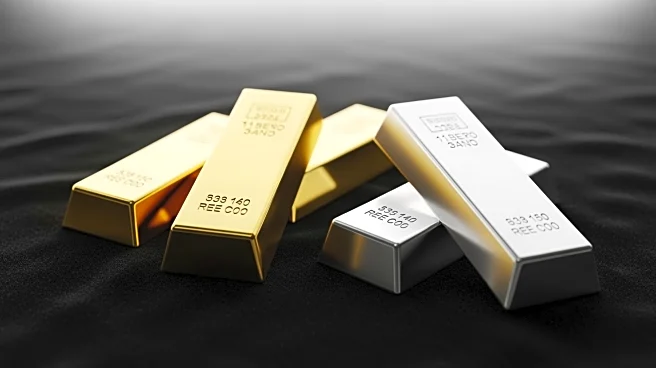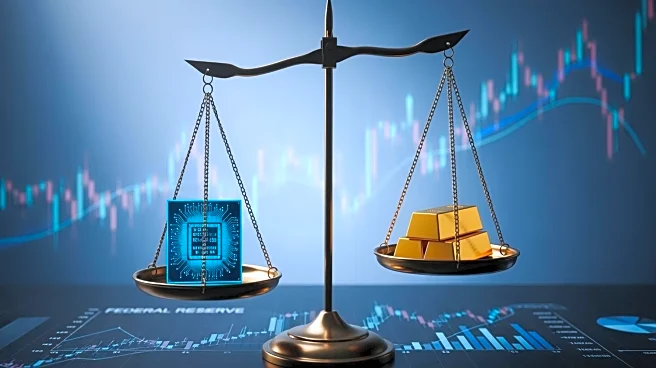What's Happening?
Morgan Stanley has significantly increased its 2026 gold price forecast from $3,313 to $4,400 per ounce, citing various factors such as central bank policy, geopolitical tensions, and a weaker U.S. dollar.
The gold market has experienced extreme volatility in 2025, with prices surpassing $4,000 in early October before a sharp 6% drop on October 21, marking the largest single-day decline in 12 years. Despite this, gold remains one of the top-performing assets of the year, with a 50% increase year-to-date. The bank's metals and mining strategist, Amy Gower, notes that gold has become a key indicator for central bank policy and geopolitical tensions, supported by strong ETF inflows and persistent central bank purchases.
Why It's Important?
The rise in gold prices reflects broader economic uncertainties, including geopolitical risks and central bank policies. As gold prices increase, it impacts various stakeholders, including investors and central banks. High prices may lead to reduced demand from central banks aiming to maintain reserve value. Additionally, the constrained supply side, with limited mine output growth, further complicates the market dynamics. The U.S. has not opened a new gold mine since 2002, indicating regulatory hurdles that could affect future supply. The ongoing volatility and high prices could challenge the sustainability of the current bull run, affecting investment strategies and economic forecasts.
What's Next?
The market is expected to remain volatile, with potential impacts from Federal Reserve rate cuts and geopolitical risks. Investors and central banks may adjust their strategies based on these developments. The balance between demand and supply will be crucial in determining future price movements. Regulatory challenges and environmental concerns may continue to limit new mining projects, affecting long-term supply. Stakeholders will need to navigate these complexities to optimize their positions in the gold market.
Beyond the Headlines
The high gold prices could lead to ethical and environmental considerations, as mining companies face pressure to expand operations while adhering to regulations. The role of gold as a hedge against economic instability may gain prominence, influencing investment portfolios and central bank strategies. The interplay between geopolitical tensions and economic policies will likely shape the future trajectory of gold prices.











